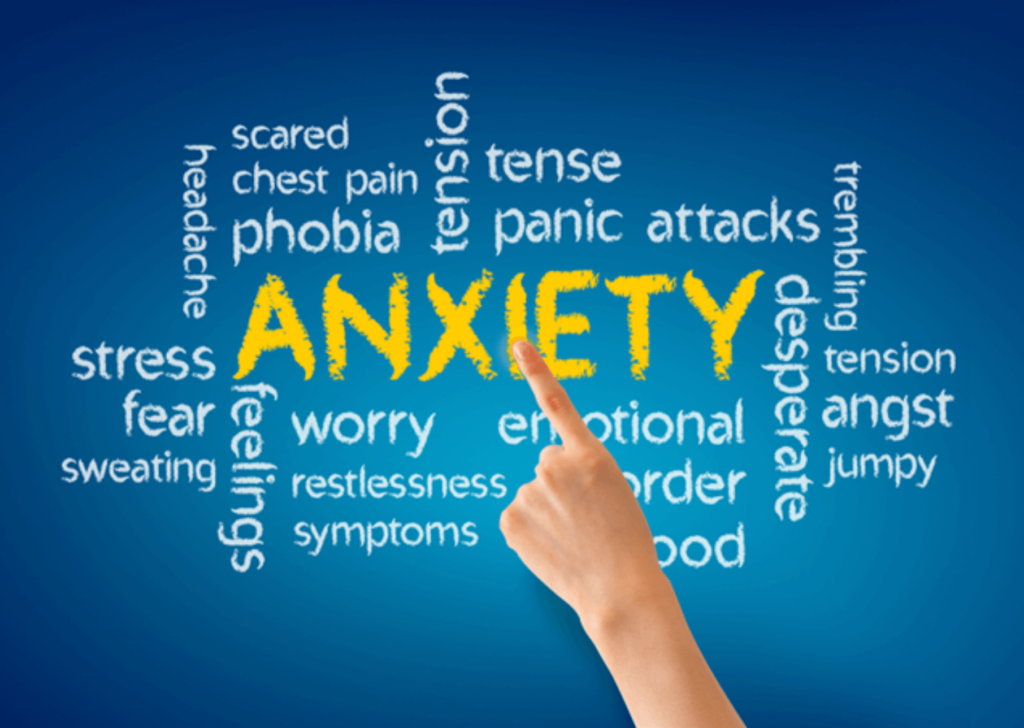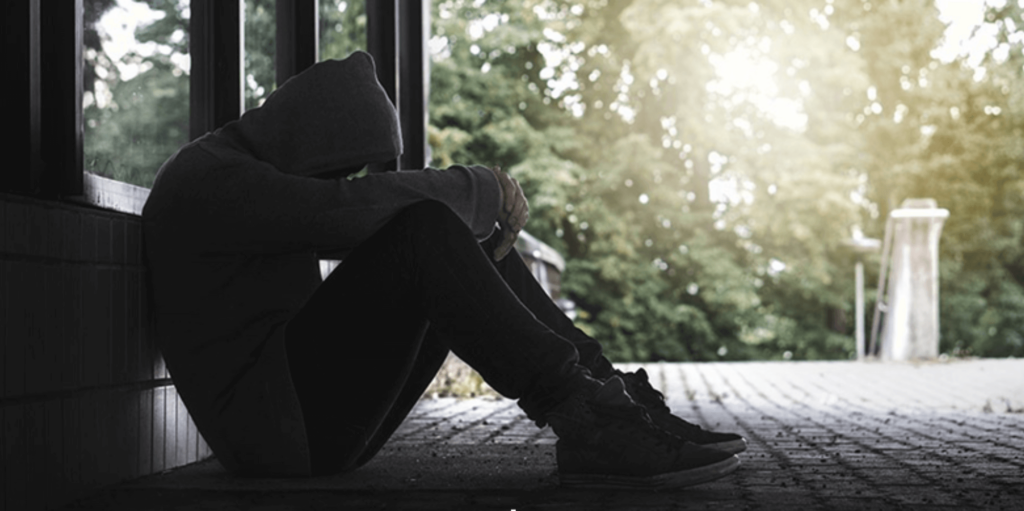Do you remember your first day of school, the first time you did a speech in front of people, a job interview you had, your first day at work, your first date, or the first time you drove? Did remember how you felt that day at that time?
These are situations people commonly feel nervous or anxious.
What is Anxiety?
Anxiety is the body’s natural response people feel when starting or trying something new. There is both good and bad anxiety. The good anxiety prevents a person from being harmed in that, when the mind feels something is of perceived threat, a person will remove him/her/themselves from the stressor. Good anxiety can also help people push through challenges. Bad anxiety prevents people from doing things they might enjoy for the fear something bad will happen.
An example of good anxiety is when the mind registered something is of perceived threat such as, if you are walking on your block and see an aggressive dog coming towards, you perceive the dog to be a threat and your reaction is to run.
Another example of good anxiety is when you have a job interview, and you really want the job. You tell yourself “you can do it” and this helps you feel more confident.
An example of bad anxiety is when people are exposed or faced with something they might be afraid of such as speaking in front people in school or in public. A person might be afraid of saying something wrong, do something wrong, and fear he/she/they will embarrass him/her/themselves.
There are different types of anxiety which are: phobias, generalized anxiety, social anxiety, panic disorder, and separation anxiety.

Here a list of symptoms of anxiety
* Symptoms of anxiety vary by person and the situation that is causing the anxiety.
- Increased heartrate/heart palpitations
- Increased respirations/heavier breathing/hyperventilation
- Difficulty breathing
- Tightness of chest/ chest pressure
- Feeling hot/sweating
- Feeling cold/cold sweats
- Trembling/feeling shaky/ feeling unsteady
- Nausea/upset stomach/butterflies/indigestion/vomiting
- Feeling nervous/scared/fearful/terrified
- Feeling dizzy/ feeling faint
- A choking sensation/lump in throat
- Unable to relax
- Fear of losing control
- Fear of dying
- Fear of worst happening
- Tunnel vision, or feeling losing a sense of reality, looking down on self
- Difficulty concentrating
- Difficult falling asleep or staying asleep
- Overthinking
Anxiety and panic attacks
Some people who have anxiety may also experience anxiety attacks or panic attacks. Although anxiety and panic attacks are very similar in the way they are experienced (symptoms), what is different is what triggers them. Anxiety attacks develop when exposed to a fearful or scary situation; there they are triggers by the stressor. Panic attacks are much different in that they can come out of the blue. For example, if a person is funny movie on television and starts to feel symptoms of anxiety, and they escalate, this is what a panic attack feels like; therefor there are no identifying triggers.
Fight or flight response
Imagine sitting in a rollercoaster seat and waiting for it to start the journey of going up the steep track. Are your feeling excite and nervous at the same time, or are you feeling scared something bad will happen? In this situation the fight or flight response starts. The heart might start to beat faster, you might take more breaths, you might feel sick to your stomach, your hands might start to shake, you might feel like you are going to pass out. If you fight the fear with good anxiety, you might tell yourself you are going to be ok and there is nothing to worry about. If you flight takes over, of if you are too worried, you might tell the operator you can’t do it and you want off the ride, this can be an example of both good and bad anxiety depending on your thought response.
Coping skills
Deep breathing exercises can be helpful in controlling your physical symptoms such decreasing heartrate and breathing. Mindfulness and guided imagery are ways to take your mind off your anxious mind. Thought distraction, thought challenging and cognitive reframing are helping tools for overthinking. Engaging in exercise and a recreational activity can be beneficial in increasing dopamine and endorphins. Stress management is helpful in reducing your level of anxiety.
Is your anxiety affecting you at home, school, work or in social setting? If you are concerned about your feelings of anxiety, if I am here to help.

Depression
Have you ever felt sad, down, blue, or lonely? Did these feelings last for a day, two or did they last for a week or several weeks? Feeling sad is a natural emotion people feel when something happens that people do not feel good about. Sadness is experienced when there is loss of a pet or family member, moving out of your house or relocating to another area, saying good bye to a good friend, not passing a class, or getting that job you really wanted. However, when this sadness last for longer periods than expected such as weeks or months, this is depression.
Depending on the circumstance or the event the occurred, a person might feel sad for days or a few weeks. When the sadness lasts longer than weeks, this may be depression. If a person sad or down for months, or there is not circumstance or event that the person is feeling sad about, this might be depression.
Symptoms of depression include:
- Depressed mood of the day
- Depressed mood nearly every day
- Decrease in appetite or increase in appetite
- Weight loss or weight gain
- Feeling tired
- Sleeping more
- Decrease interest in things you normally enjoy
- Feeling worthless, hopeless, lonely or feelings of guilt
- Difficulty concentrating
- Isolation
- Suicidal ideation
- Thoughts of self-harm/self-harm
- Feeling restless or agitated
- Decreased interest in intimacy
There are different types of depression is experienced and classified. Depression symptoms range from mild, moderate to severe. Depression can be a single episode or chronic episode. Types of depression are: major depression, persistent depression, Bipolar Disorder, postpartum depression, seasonal depression, situation depression, premenstrual dysphoric depression, disruptive mood deregulation disorder, atypical depression, and Psychotic depression.
Each type of depression has both similar and different symptoms. Some symptoms are experienced every day, some are experienced most days, some experienced some days, and some experienced in certain seasons.
Charting your mood on a calendar can be helpful in learning how often you experience depression, if it is triggered by certain events, and times of the year In addition, charting your mood can be helpful in determining if there is a cycle.
Coping skills
- Talking to a friend or family member
- Exercise
- Journaling
- Hobbies
- Going to a walk
- Positive affirmations
- Listening to upbeat music
- Social support
- Mindfulness
- Setting short-term goals
When people isolates themselves, this can make depression worse. Talking to a friend or family member can help brighten the day but just having a 15 minutes conversation. Exercise is helpful in increasing serotonin and endorphins. Journaling can be beneficial in getting your thoughts out of paper. Engaging in a hobby and positive affirmations can help improve self-esteem. Listening to upbeat music can aide in allowing positivity into your mind. Setting short-term goals helps with focus on the present and starting with small steps.
Depression affects everyone differently. Is your sadness affecting you at home, work, school or preventing you from doing things you normally enjoy? Do feel sad most of the time or at certain times of the year? If you are concerned about feeling down, or concerned if your depression is lasting longer than normal; I am here to help.
Resources
https://www.makinwellness.com/coping-skills-for-depression/
https://www.psychologytoday.com/us/basics/anxiety/types-anxiety
https://www.psycom.net/depression/types-of-depression
WRITTEN BY:

LPC, NCC
Jul 21, 2022

